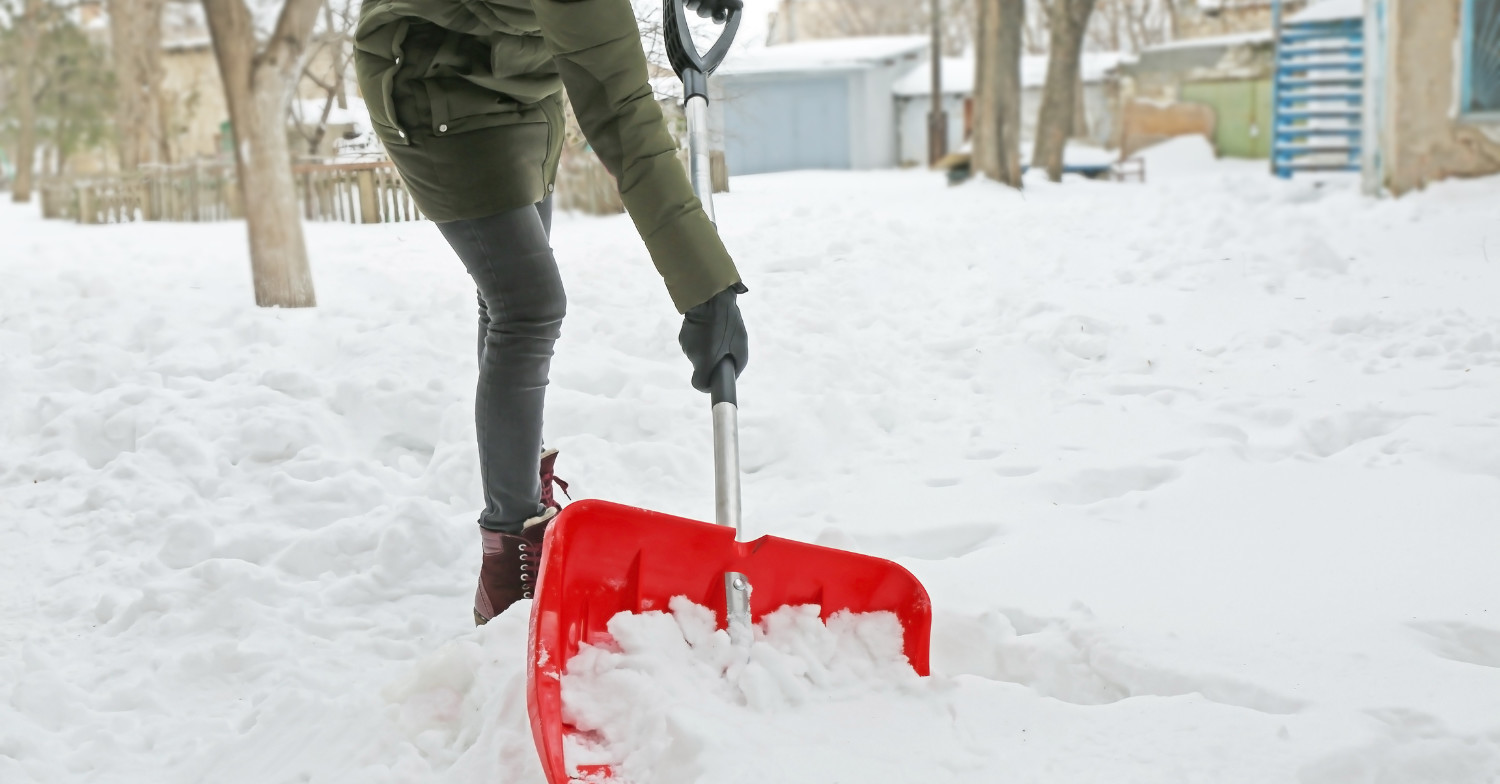
Winter in Saskatoon brings a beautiful blanket of snow, but it also brings a less appealing task—shovelling it. For many, the seemingly simple chore can result in a frustrating, sometimes debilitating, low back ache.
If you’ve ever found yourself wincing after clearing your driveway, you’re not alone. This common complaint often stems from lumbar disc derangement and other mechanical issues in your lower back.
At E3 Chiropractic + Wellness, we see this problem frequently, and we’re here to explain why it happens and how to prevent it.
Understanding Low Back Pain After Shovelling Snow
Shovelling snow combines physical strain, repetitive movements, and sometimes improper techniques—all of which can wreak havoc on your lower back.
The most common cause? Lumbar disc derangement, a condition that affects the soft discs between the vertebrae in your spine. This condition can worsen when you repeatedly round and twist your lower back, motions often unavoidable during snow shovelling. Let’s dive deeper into why this happens.
Common Culprits Behind Your Snow-Shovelling Pain
1. Rounding Your Lower Back
When you bend over to scoop snow, your spine flexes forward. This rounding motion puts significant pressure on your lumbar discs. Think of these discs as jelly-filled cushions that absorb shocks in your spine. Flexing your back too much can push the jelly-like center (nucleus pulposus) toward the edges, irritating the surrounding nerves and causing pain.
Over time, this repetitive strain can lead to disc herniation or bulging, which might explain the stiffness or sharp pain you feel after shovelling.
2. Twisting While Lifting
After scooping snow, many people twist their upper body to toss it aside. Unfortunately, this movement adds torque to your spine, particularly if your core isn’t adequately engaged. The combination of twisting and bending is a recipe for disaster, placing excessive strain on your lower back muscles and spinal discs.
3. Overloading Your Spine
Snow is deceptively heavy, and lifting overloaded shovels repeatedly can compress your lower spine. This compressive force fatigues your muscles and stresses your spinal joints, leading to soreness or even acute injuries.
Signs You May Have Lumbar Disc Derangement
At E3 Chiropractic + Wellness, we often diagnose lumbar disc derangement in patients who describe symptoms such as:
Persistent low back pain: Especially noticeable after prolonged sitting, bending, or lifting.
Radiating discomfort: Pain shooting into the buttocks or down the legs, a sign that a nerve might be affected.
Morning stiffness: Difficulty getting out of bed or straightening your back in the morning.
If these symptoms sound familiar, it’s essential to address them promptly to prevent further injury.
How to Prevent Low Back Pain While Shovelling Snow
The good news? You don’t have to suffer every winter. With a few simple adjustments, you can protect your spine and reduce your risk of injury.
1. Use Proper Technique
Bend at the hips and knees: Keep your back straight while scooping snow to minimize disc strain.
Avoid twisting: Turn your whole body to face the direction you’re throwing snow instead of twisting your torso.
Push, don’t lift: Whenever possible, push the snow to the side rather than lifting and tossing it.
2. Choose the Right Shovel
A lightweight, ergonomic shovel with a curved handle reduces the amount of bending you need to do. Smaller shovels also prevent overloading, making each scoop easier on your back.
3. Warm Up First
Cold muscles are more prone to injury. Before heading out, spend 5–10 minutes warming up with light stretches or dynamic movements like lunges and arm swings.
4. Take Breaks
Clearing snow can be a marathon, not a sprint. Pause every 15–20 minutes to stretch and give your back a break.
5. Strengthen Your Core
Your core muscles play a crucial role in supporting your spine during physical activities. Incorporate exercises like planks, bird-dogs, and bridges into your routine to improve stability and reduce your risk of injury.
How E3 Chiropractic + Wellness Can Help
If snow-shovelling pain has already taken a toll on your back, don’t worry—help is available. As a trusted Saskatoon Chiropractor, E3 Chiropractic + Wellness specializes in diagnosing and treating low back pain caused by lumbar disc derangement and other mechanical issues.
What We Offer:
Comprehensive Assessments: We’ll evaluate your spine’s alignment and function to pinpoint the exact cause of your pain.
Personalized Treatment Plans: From spinal adjustments and soft tissue therapy, to strengthening and rehabilitative exercises, our treatments are tailored to your specific needs.
Education and Prevention Strategies: We’ll teach you how to maintain proper spinal health and avoid future injuries.
Why Choose E3 Chiropractic + Wellness?
Our approach is rooted in evidence-based care and a commitment to your overall wellness. Whether you’re dealing with acute pain or looking to prevent injury, our team will work with you to create a plan that fits your lifestyle.
When to See a Chiropractor:
While occasional soreness after shovelling is normal, persistent or severe pain is a red flag. If you experience any of the following, it’s time to consult E3 Chiropractic + Wellness:
- Pain that doesn’t improve with rest or over-the-counter remedies.
- Tingling, numbness, or weakness in your legs.
- Difficulty standing, walking, or performing daily activities.
- Ignoring these symptoms could lead to more significant issues, so don’t delay seeking professional care.
Take the Next Step Toward a Pain-Free Winter
Shovelling snow doesn’t have to mean suffering through low back pain. By understanding the causes, implementing preventative strategies, and seeking expert care when needed, you can protect your spine and enjoy the winter season.
By addressing the root causes of your discomfort and providing tailored solutions, we’re here to ensure your back stays strong and healthy—no matter how much snow Mother Nature sends your way.
If you’re in Saskatoon and struggling with back pain, let E3 Chiropractic + Wellness help. Click HERE to book a FREE discovery with us and take the first step toward lasting relief and better spinal health.





